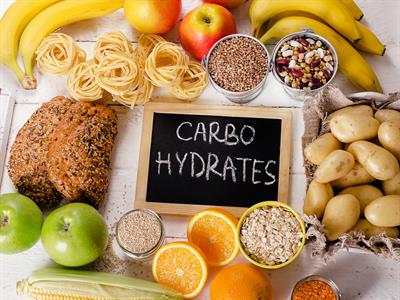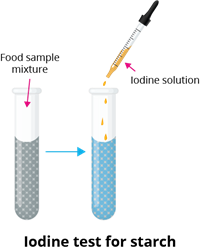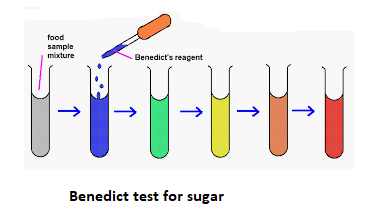PDF chapter test TRY NOW
The different components of food are explained in the following section.
Carbohydrate:
Carbohydrates are the main source of energy that provides energy to the body. Carbohydrates are primarily present in plant foods but also occur in dairy products like milk. Carbohydrates in the food occur in various forms, which include:
1. Sugar - Includes sugars that are present naturally in food. Sources of sugar in food include fruits, honey, cane sugar, and sugar beet.
2. Starch - Starch comes under the category of complex carbohydrates. They are polymers of glucose. Sources of starch include rice, wheat, maize, potato etc.
3. Dietary fibre - They are mainly indigestible complex polysaccharides. The sources of dietary fibre include whole-grain, nuts and seeds.

Sources of carbohydrates
However, carbohydrates in excess amount can lead to diabetes, obesity and other health complications. Starch and sugars are the most abundant carbohydrates present in our food. To identify starch in our food, we can perform the below-mentioned test.
Test for starch:
Aim:
To test the presence of starch in the food item.
Materials required:
Boiled potato, dropper or ink filler, dilute Iodine solution.
Procedure:
1. Smash the boiled potato.
2. Add 2-3 drops of dilute iodine solution on the smashed potato.
3. Observe the colour of the food item.
Observation:
The potato turns blue-black.
Inference:
Iodine that was added to the boiled potato reacts with the starch present in the potato. This forms a Starch-Iodine complex that is blue-black in colour. Thus, the appearance of blue-black colour confirms the presence of starch in the food item.
Blue-black colour indicates the presence of starch in the food item.

A video that explains the test for starch in various food items (Potato, rice, salt, and sugar) is attached below:
The test used for sugar:
Benedict's test:
Benedict's solution is used to test for simple sugars, such as glucose. Benedict's solution is a clear blue solution of sodium and copper salts.
In the presence of simple sugars, the blue solution changes colour to green, yellow, and brick-red, depending on the amount of sugar.

